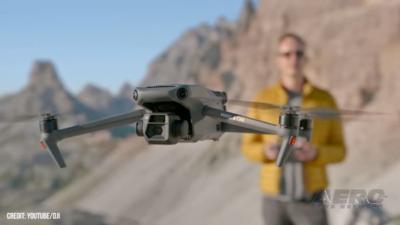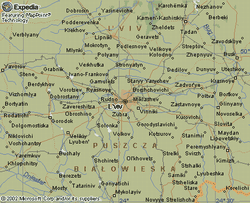The Whelps of War
Ukraine’s volunteer armed forces comprise a small but effective group of drone operators who’ve consistently and convincingly demonstrated the efficacy with which consumer drones can be used to identify targets, direct artillery fire, assess battle damage—and drop grenades on Russian combatants.

Aerorozvidka (Aerial Reconnaissance) personnel have carried out a number of brutally succinct missions that have seen off-the-shelf, First Person View (FPV) drones—primarily iterations of DJI and NewBee racing models—deposit Russian-made, 30-millimeter, Vog-17m high-explosive grenades into trenches, foxholes, and even vehicles occupied by Russian military operatives.
Ordnance-carrying kamikaze drones—such as the U.S.-supplied Switchblade 300 and Phoenix Ghost—are referred to in military-parlance as loitering munitions. Lacking access to such high-dollar assets, Ukraine’s civilian warfighters have cobbled together improvised loitering munitions from commercial drones, common electronic components, and scavenged weaponry. Most of these contraptions are remotely-piloted, First Person View (FPV) devices which—despite requiring considerable skill to fly—negotiate complex flight-environments with far greater speed and tactical relevance than autonomous drones.
Aerorozvidka tactics are pragmatic and effective. Most missions entail two drones piloted by two operators—one performing battle-zone reconnaissance and identifying targets with a conventional quad-copter drone, and the other attacking with an FPV drone. The attack-drone pilot guides his machine via special goggles wirelessly paired to the drone’s camera. The method is so effective that drone attacks have been successfully carried out on Russian forces defiladed in buildings. A recently posted online video depicts the FPV feed from a Ukrainian kamikaze drone entering a structure through an open doorway and delivering a Vog-17 grenade.

Designed primarily for speed and maneuverability, FPV drones have limited carrying capacity, most, however, can muster sufficient grunt to drag aloft a single Vog-17 grenade—the twenty-foot kill-radius of which makes for a formidable and feared antipersonnel munition. Quad-copters, conversely, have been used by Aerorozvidka personnel to carry as many as ten, Soviet-style RKG grenades. An online video posted in June depicts two Ukrainian Unmanned Air Vehicles (UAV)s dropping multiple grenades upon and apparently destroying a Russian armored vehicle.
In response to the growing lethality of Ukraine’s improvised drones, Moscow has deployed increasing numbers of UAV countermeasures, including radio-frequency emitters capable of severing drone command signals and even assuming control of enemy drones. Russian ground troops are also being provisioned with smoke generators which prevent FPV drone operators from identifying targets, and provide cover from which riflemen can destroy interloping aerial vehicles.
Weaponized homemade drones speak contemporaneously to the ingenuity, bravery, and desperation of the Ukrainian people. Bravery and set jaws, however, ought not be considered portents of an imminent Ukrainian victory. War is a complex and protracted undertaking, and the extent to which an ad hoc group of drone-toting civilians is capable of deterring the world’s penultimate military should not be overestimated—notwithstanding the Western media’s staunch assertions to the contrary.
 ANN's Daily Aero-Term (05.01.24): Say Altitude
ANN's Daily Aero-Term (05.01.24): Say Altitude ANN's Daily Aero-Linx (05.01.24)
ANN's Daily Aero-Linx (05.01.24) Classic Aero-TV: Korean War Hero Twice Reborn
Classic Aero-TV: Korean War Hero Twice Reborn Airborne 04.29.24: EAA B-25 Rides, Textron 2024, G700 Deliveries
Airborne 04.29.24: EAA B-25 Rides, Textron 2024, G700 Deliveries Airborne Affordable Flyers 05.02.24: Bobby Bailey, SPRG Report Cards, Skydive!
Airborne Affordable Flyers 05.02.24: Bobby Bailey, SPRG Report Cards, Skydive!




